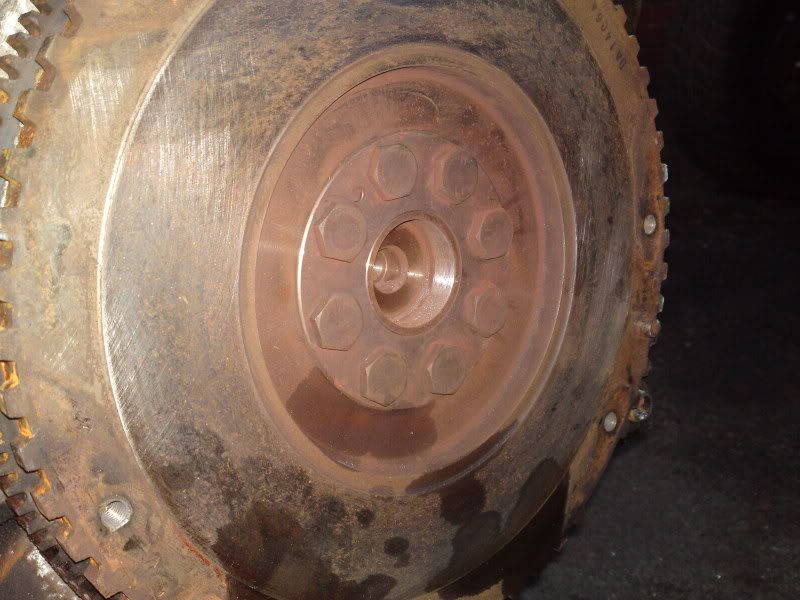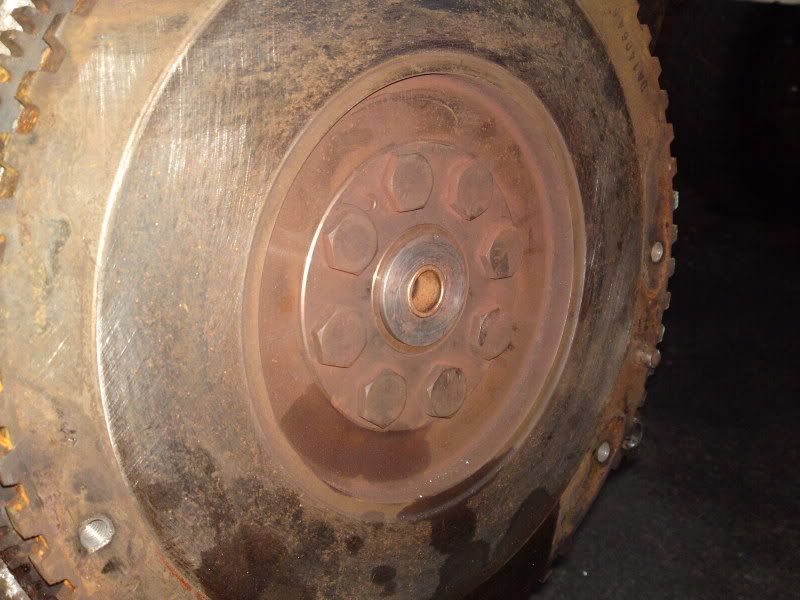coozer
|
| posted on 11/3/11 at 11:48 AM |

|
|
Using adapter plates?
Whats the crack with adapter plates for mounting different gearboxes to different engines.
My thoughts are that they push the gearbox away from the motor meaning the input shaft doesnt engage in the spigot bearing.
Say I use a 5mm plate, this moves the input shaft 5mm out of the spigot. Is this a massive problem or is the shaft generally long enough not to make a
huge difference?
Steve
1972 V8 Jago
1980 Z750
|
|
|
|
|
MikeR
|
| posted on 11/3/11 at 12:12 PM |

|
|
I struggled with how they work till it occurred to me you may need to make a spacer for the flywheel as well. If you use a 10mm adapter plate, then
you add a 10mm flywheel spacer and everything is in the same place - assuming the clutch / release bearing works the same as the original application.
As you've made a spacer i guess you'd also make a hole for the spigot bearing to go into.
(my thoughts - not necessarily correct)
|
|
|
r1_pete
|
| posted on 11/3/11 at 12:22 PM |

|
|
It really depends on the engine gearbox combination, for example the adapter on my XKE engine to Getrag box is between the bellhousing and box, is
about 20mm thick, but puts the shaft and spigot bearing in the correct place.
Some gearboxes seem to have the shaft protruding the bellhousing face, MT75 for example, others the shaft is below the bellhousing face.
Guess its a matter of selecting a box with a long enough input shaft, and making the plate the required thickness to get the spigot entry correct.
If you make a flywheel spacer you then have the problem of starter motor mesh.
I did think about this long and hard when I wanted to build a hotrod using a Daimler V8 back in the early 80s, never did get beyond sourcing an engine
and a 3L capri box.
|
|
|
wilkingj
|
| posted on 11/3/11 at 12:25 PM |

|
|
Hmmm... If you put a spacer / plate in between a matched Engine and Box I could understand your comments.
However, the general idea is to mate up unmatched engines / box combo's.
Thus the distances may be such, that for a particular box, a 20mm thick plate is needed to set the box at the correct distance for one engine and a
5mm plate for a different engine.
Hence only certain engine and box combo's can have adaptor plates that actually work.
A good example of Boxes is the Ford type 9 box which has different length input shafts depending whether its a I4 or a V6 engine.
Thus one might not work with an adaptor plate and the other would, of course depending on the engine you are mating up to.
Then of course, I could be spouting absolute tripe  

|
|
|
MikeR
|
| posted on 11/3/11 at 12:39 PM |

|
|
In theory the length of the input shaft is irrelevant if you can space the box and flywheel independently.
If the starter is based on the gearbox bellhousing then the starter motor and flywheel should be in the right place. If you move the flywheel too far
backwards then the input shaft won't engage with it.
If the starter is on the engine then i can see an issue and can't see how to get round it easily without making custom starter motor mounts /
shafts.
|
|
|
austin man
|
| posted on 11/3/11 at 12:42 PM |

|
|
If you start moving the flywheel then you have problems with the Starter motor and its throw so possibly no engagement , would this not also put
additional stress ont the crank ?
Life is like a bowl of fruit, funny how all the weird looking ones are left alone
|
|
|
v8kid
|
| posted on 11/3/11 at 01:21 PM |

|
|
I just machined a new spiggot bearing with a 12mm thick collar to support the input shaft. As it happened I was short of space to squeese a twin plate
clutch and axial slave cylinder into a space thast was not designed for this stuff so it worked out rather well.
I used phosphor bronze for the bush and it was ££ Ouch! If I was doing it again I'd try and use Oilite or even just brass as there is not a
trace of wear.
Cheers!
You'd be surprised how quickly the sales people at B&Q try and assist you after ignoring you for the past 15 minutes when you try and start a
chainsaw
|
|
|
owelly
|
| posted on 11/3/11 at 01:48 PM |

|
|
I used an adapter plate to fit the Pug V6 bellhousing (and a bit of gearbox casing!) to the Type 9.

This moved the input shaft away from the spigot in the end of the crank so I could either, machine the adapter plate thinner and machine a bit off the
bell housing face, or, machine up a spigot bearing carrier and hammer it into the end of the crank. Thus:


Oilite bush was £2.20 BTW...
http://www.ppcmag.co.uk
|
|
|













